|
Monday, May 28, 2012
Progress Notes
Last week our museum was opened to the public for this year’s summer season. As you may remember from last week’s Progress Notes we had a grand opening day Saturday, May 19 when coincident with our new season the Veteran’s Memorial provided us by the Jason Ash Memorial Foundation was dedicated. Since then we have had an enthusiastic response by local Miller County residents who have been visiting the museum. Throughout the winter our museum staff under the guidance of museum director Karen Smith has added new exhibits and revised ones already in place. Some of those new exhibits were featured in the video made by Shawn Kober of LakeTV Channel 24 which you can review if you haven’t seen it by going to the bottom of our home website page.
Our volunteer staff and members are eager and enthusiastic to guide visitors about the more than eight thousand square feet of displays we now have which are located on four separate floors of the museum building. Museum hosts this last week were Jody Newman and Helen Schulte (photo 01).
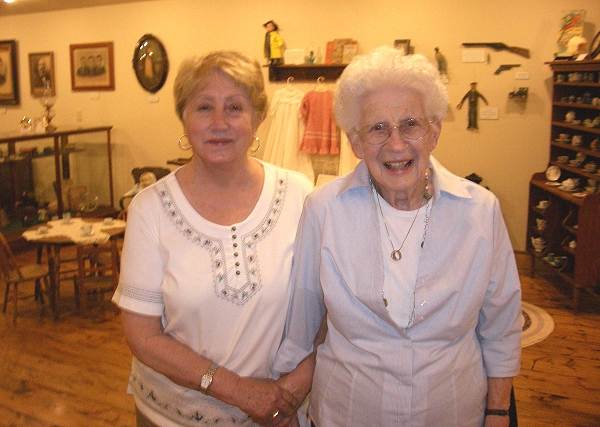
01 Jody Newman and Helen Schulte
Both are Society members having extensive knowledge of our county’s history and are eager to guide visitors through the museum. Most of our hosts are board members who are familiar with the museum and its attractions.
One of our first visitors last week was Beverly Dunstan of Lake Ozark, who spent considerable time in our museum library researching family history (photo 02).
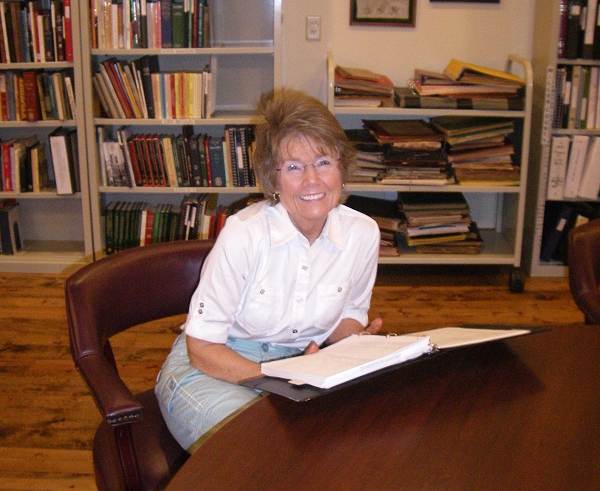
02 Beverly Dunstan
More historical resources about our county are found in our library than at any other facility of which I am aware. Not only do we have a complete library pertaining to Miller County history but also much information is stored on our three computers. So do take the time this summer to come and visit us!
As this is the sesquicentennial year regarding the beginning of the Civil War our museum is participating in remembering this important historical event. As I have reported in an earlier Progress Notes the State of Missouri has offered to present a display entitled Divided Loyalties featuring the history of the Civil War in Missouri for organizations such as ours in early June. You can read more about that in this previous Progress Notes.
Because this is a special year regarding our county’s Civil War history I will present several articles about the subject in future Progress Notes as well as this week’s edition. Ginny Duffield wrote a short but very interesting history of the Civil War in Miller County which I presented in a previous Progress Notes which I will place here adding photos not presented before:
Miller County during Civil War
By Ginny Duffield (photo 03)
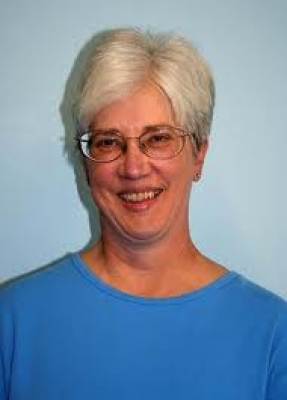
03 Ginny Duffield
"Bloody Kansas" had erupted into open warfare between slave interests and abolitionists by the election of 1856, and the unrest spread into Missouri. The Democrats nominated Buchanan and the party platform opposed federal interference in slavery. John Fremont ran for the still new Republican Party and Millard Fillmore ran on the Know Nothing ticket. Buchanan was the favored candidate in Miller County.
By 1860, the National Democratic Party had split in to the Southern Democrats and the Northern Democrats over slavery. The Constitutional Union Party had been formed and the Republicans had completely replaced the Whigs. The 1860 presidential election had four candidates: Abraham Lincoln, the Republican, was the eventual winner, as we all know. He had only 23 votes in Miller County, where there still were a fair number of slave owners.
Those 23 voters for Honest Abe probably kept mum about whom they voted for as "Black Republicans;" they were not well thought of in Miller County at the time. The Northern Democrats had 94 votes for Stephen Douglas, the Constitutional Union had 193 votes for John Bell and Southern Democrat candidate John Breckenridge had 495 Miller County votes.
It can be construed that more than 60 percent of the adult male population in Miller County favored the southern cause and eventually secession. Women, of course, could not vote.
As the nation dissolved into Civil War, Miller County fell into general lawlessness for most of the next five years. At first, secession forces, and sympathies, had the upper hand in Miller County, though there were many loyal to the Union and some families were split by the issue. A number of families simply left the area because of the unrest and danger. Excesses by southern sympathizers and guerillas eventually hardened much of the remaining local population against the southern cause, even though occasionally the Federals did much the same thing. Losing livestock, grain and food stores to guerillas and sometimes having their homes and farm buildings torched by them as well was more than hardworking farmers could bear. At one point, 45,000 Union troops were headquartered in Central Missouri, testament to how much the United States military wanted to keep Missouri on the Federal side.
The Civil War left none of Miller County untouched. General Sterling Price's Confederates rampaged across north Miller County at one point.
Guerillas operated generally south of the river and around Tuscumbia. The worst of those was a man known as "General Crabtree." I have been unable to find a man named Crabtree who was officially a general in the Confederate Army. It is possible that Crabtree either held a different rank, did not use his real name, or that he had nothing to do with the Southern army other than claim to be in the Confederate Army. He may have just been a criminal who disguised himself and his men as Confederate. There were those attesting to be loyal to the Southern cause but using the war as a cover for criminal behavior, and their crimes continued beyond the end of the war. After the war ended, bands of marauders and bushwhackers roamed the countryside, widows and their children often went hungry as their husbands and fathers had been killed in the war and neighbors, and even brothers, who had fought on opposite sides continued to carry grudges. The deep seated loyalty to the Republican Party in Miller County doubtless has roots in the Civil War and the aftermath.
Thanks Ginny.
Did you know that one of Miller County’s most important entrepreneurs was a gentleman originally from England? His name was Charles Henry Clarke (photo 12) who moved here in the late 19th century.
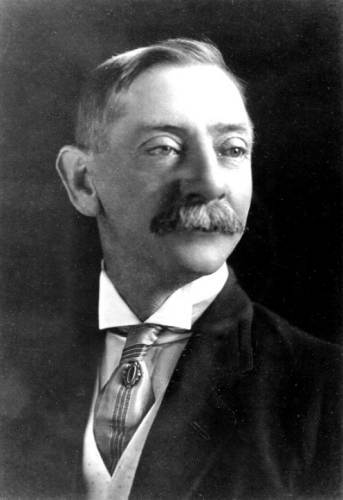
12 Charles Clarke
He even had a subdivision and street named after him located on the west side of Tuscumbia. His story is well told in detail in his obituary published in the Tuscumbia Autogram October 22, 1943:
Miller County Autogram
October 22, 1943
Charles H. Clarke Died at Kansas City Monday
Lacked Only 33 Days Before 90 Years Of Age; Was Born In London, England
Charles H. Clarke, one of the most familiar figures in this county in the late 1800’s and the early 1900’s, passed away at his home at the Hotel Frederick in Kansas City, Monday morning, October 19, at 2:10 o’clock. Mr. Clarke was 89 years, 10 months and 27 days of age.
Mr. Clarke was born in London, England, November 22, 1852, the son of John Clarke. At the age of about 20 years, in 1871, when people of that country were migrating to the new world, Mr. Clarke embarked on a sailing vessel for the new country. After arriving in New York he found his way to Chicago, Illinois, where he worked at odd jobs for a short time. There he met John Volmert, then a citizen of the Marys Home community who was in Chicago on business, and he was employed by Mr. Volmert and returned to this county with him as a house and kitchen worker. Mr. Clarke liked this county, and he soon moved to Tuscumbia where he was employed by Theron Folsom, who conducted a mercantile business at the Hauenstein stand, as a clerk (photo 13).
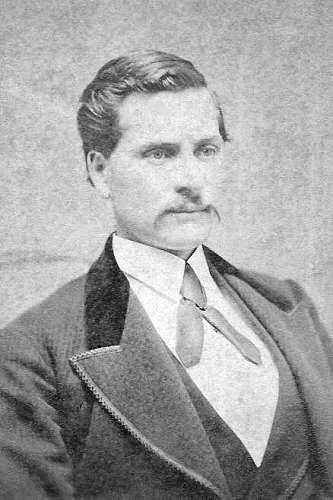
13 Theron Folsom
He was employed at this position for about a year, when Johnson and Brumley constructed a store across the street from Folsom’s in about 1880, and he was employed there for several years. Captain R.M. Marshall, still a resident of Tuscumbia, being employed by the new firm as a clerk at the same time as Mr. Clarke (photo 14).

14 Captain Robert Marshall
Mr. Clarke continued in the mercantile business here for several years, again with Folsom. Later he was employed by the Cincinnati Clothing Company as a salesman of men’s apparel, and traveled extensively for several years in this interest, in all the southern part of the state and established for himself a wide reputation as a master salesman.
In the late 1800’s he became interested in politics, and took no hesitancy in “stumping” for the Republican party. He was unsuccessful in his first few attempts to secure an office for himself, but in the year 1898 he secured the Republican nomination for county clerk and was elected for a four year term. Again in 1902 he was renominated and elected for another four year term, which he served to the credit of himself and the county.
After his county official career, Mr. Clarke again entered the clothing sales business and at the same time he and J.L. Cummings established the C.H. Clarke Commission Co. in St. Louis. They successfully operated this business for a few years when Mr. Clarke moved to Kansas City in 1912 where he secured employment with the Kansas City Towel and Supply Company, with which company he was affiliated until his age prevented his longer working. However, his company kept him on the payroll until his death.
In a few years after Mr. Clarke came to Tuscumbia he was united in marriage to Miss Belle Skinner, and to this marriage three children were born, Mrs. Louie Lawson of Kansas City, Mrs. Lillie McGee of Matoon, Illinois, and C.O. Clarke of Oklahoma City, Oklahoma. Mrs. Clarke passed away when the children were quite young.
After the death of his first wife, Mr. Clarke was united in marriage to Miss Mattie J. Clark of Tuscumbia. To this union two children were born, Mrs. Lura Walton of Dwight, Kansas, and Mrs. Mabel Simmons of New Orleans, Louisiana. Mrs. Clarke passed away July 12, 1929. In addition to the five children, Mr. Clarke is survived by numerous other relatives, and many, many friends of this county and Kansas City.
Mr. Clarke was a member of the Christian church. His greatest delight was in sponsoring community Christmas trees and playing Santa Clause for kiddies of the community. He was public spirited, and stopped at nothing in promoting enterprises for the betterment of the community. He not only worked with diligence, but took every opportunity to present his views in oration. He was, to a large extent, responsible for the formation of the Miller County Club at Kansas City, and during his more active days was the host and “sparkplug” of the club. He readily made friends, seemingly never meeting a stranger. He was fond of everyone, and everyone knew him and took him to their heart. Mr. Clarke was witty by nature, one of his pet stories was in telling friends that he came from the largest cities in the world to the smallest town in the world. He was a fluent conversationalist, and his friends tell that he was quite a singer in his younger days and that he would entertain them for hours singing the old songs of his native country.
Mr. Clarke was familiarly known to his many friends as “London Charlie.”
Funeral services were held at 8 o’clock Tuesday night at the Wagner Chapel in Kansas City, and the body was brought to Tuscumbia Wednesday morning where funeral services were held at the Tuscumbia Christian church at 2:00 clock, conducted by Brother J.C. Thompson. Burial was in the Tuscumbia cemetery by the side of his wife.
Charles Clarke developed the western end of Tuscumbia which was named “Clarke’s Addition.” In this next diagram it is located on the left side colored pink (photo 15).
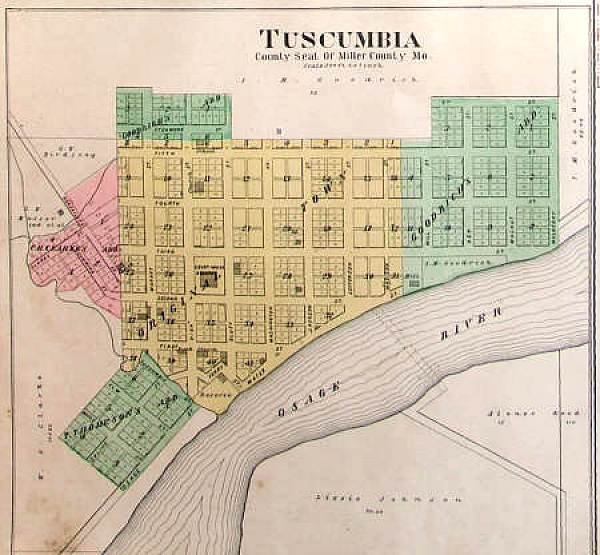
15 Old Map of Tuscumbia with Clarke Addition
He built a huge house there which was still standing until about forty years ago when it burned (photo 16).
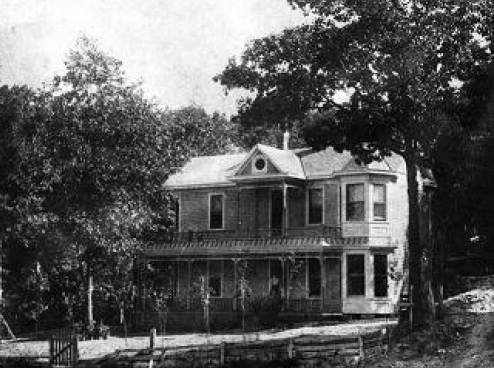
16 Home of Charles H. Clarke
In the early 1900’s he was county clerk as pictured in this next photo in the back row third from the left (photo 17).
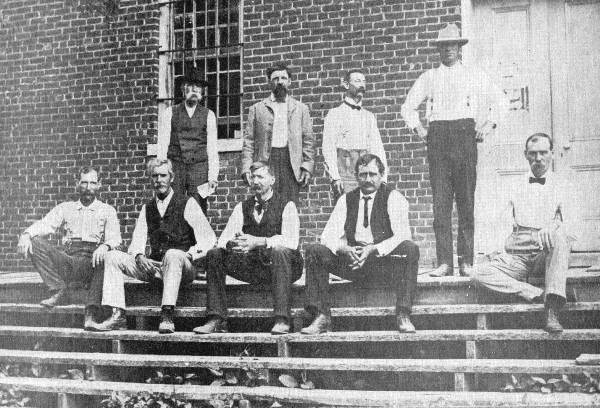
17 County Officials - 1901 - Charles Clarke third from Left Standing
His daughter, Louie Clarke Lawson, was a very well known columnist and historian for the Tuscumbia Autogram for many years throughout the mid part of the last century (photo 18).
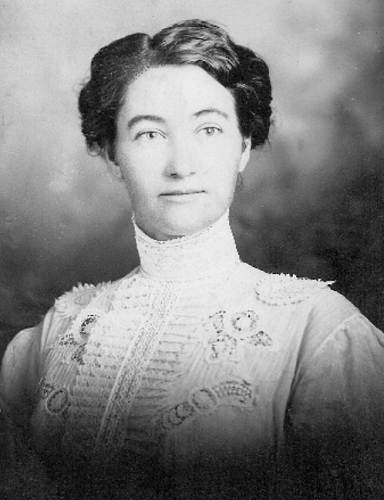
18 Louie Clarke Lawson
You can read more about her at this previous Progress Notes.
You can read more about Charles Clarke at this previous Progress Notes.
That’s all for this week.
 Joe Pryor
Previous article links are in a dropdown menu at the top of all of the pages.
|

